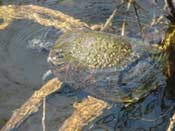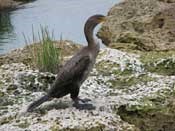|
Let's talk about another very important topic to the Everglades: WATER! We use water for many things each day of our lives:

These are just a few of the ways we use water. Water is always important. Just like us, the Everglades needs water since it is home to so many different plants and animals (remember to visit Everglades Seasons for more information). 
Water is an important element necessary for the Everglades’ survival. The trouble is that the Everglades needs a certain amount of water at certain times of the year. Too little or too much delivered at the wrong time could spell disaster for the animals living here in the Everglades. The Everglades' ecosystem is a delicate balance that can easily be altered by just a few small changes. 
Let's take a moment to talk about the water of the Everglades. What does it do for the ecosystem? Where does it comes from? Water soaks into the soil and rock beneath the land, helping plants grow while providing a drinking source for all the animals that live within the Everglades. Without water, the marshes would dry up, the river of grass would cease to flow, plants would dry up, the fish would have no home, and the other animals would have no water to drink. So how does this important element reach the Everglades? 
NPS Water arrives into the Everglades in two ways:
The most direct way, is through rain. The Everglades gets a lot of its water from rainfall (somewhere around 60 inches per year on average). 
In Florida, water falls and collects in springs and lakes that start to flow into the Kissimmee River. The Kissimmee River flows south into Lake Okeechobee and joins the water already stored there. As the water flows through the Everglades, it eventually chains into Florida Bay and the Gulf of America. As the water flows through the Everglades to the bay, a lot of it starts to slowly soak into the limestone rock underground. Once it soaks into the limestone, it gets stored in underground caves called aquifers. Aquifers are Florida’s freshwater source, so when you get a glass of water from your sink, the water coming out of the faucet is coming from these aquifers. The Biscayne Aquifer, specifically, is the principal source of drinking water for southeastern Florida. 
Wow! I guess we want the Everglades to get that water for our own needs as well as for the animals and plants that live there too. Remember, in south Florida, we all share the same water source! This means we have to share the water with all living things if we want the Everglades (and us too) to remain healthy! Can you think of some ways we can conserve (save) water or make better use of the water we handle daily? ** Hint ** Try remembering all the ways you use water. I mentioned a few at the start of this page. To return to the main Welcome page click on |
Last updated: February 24, 2025
